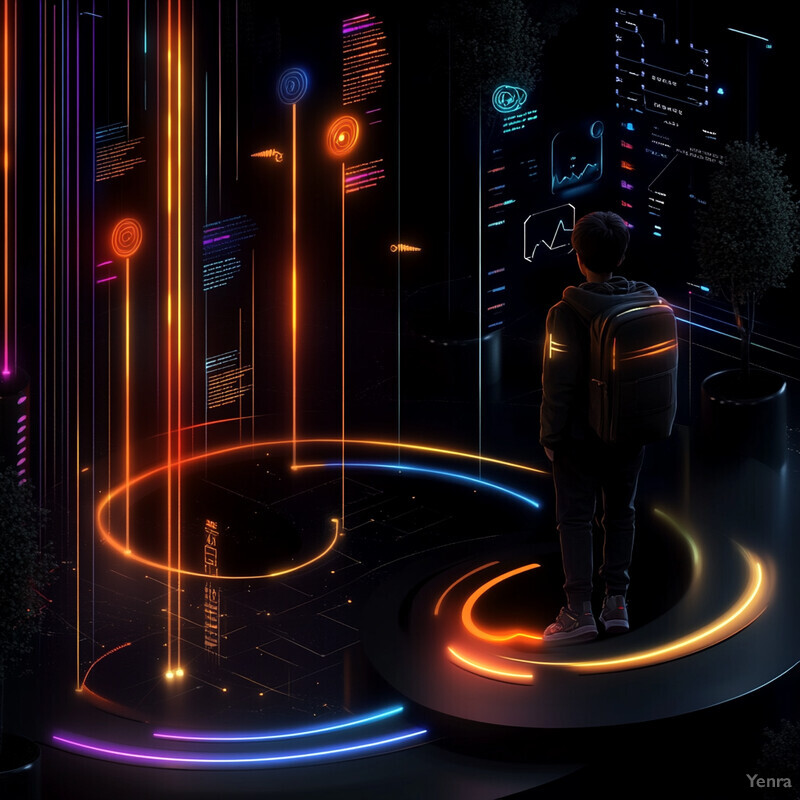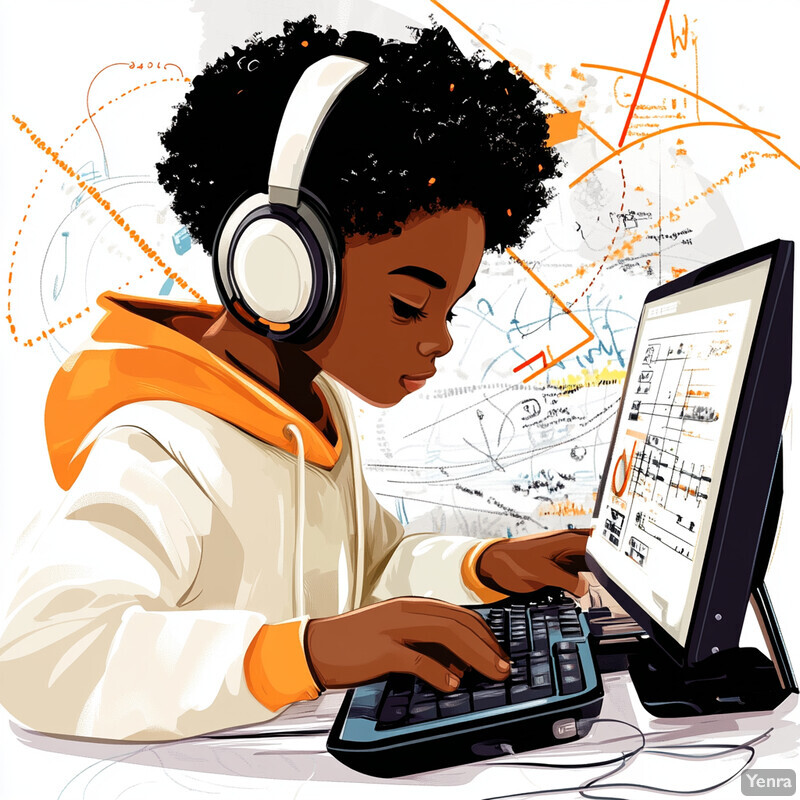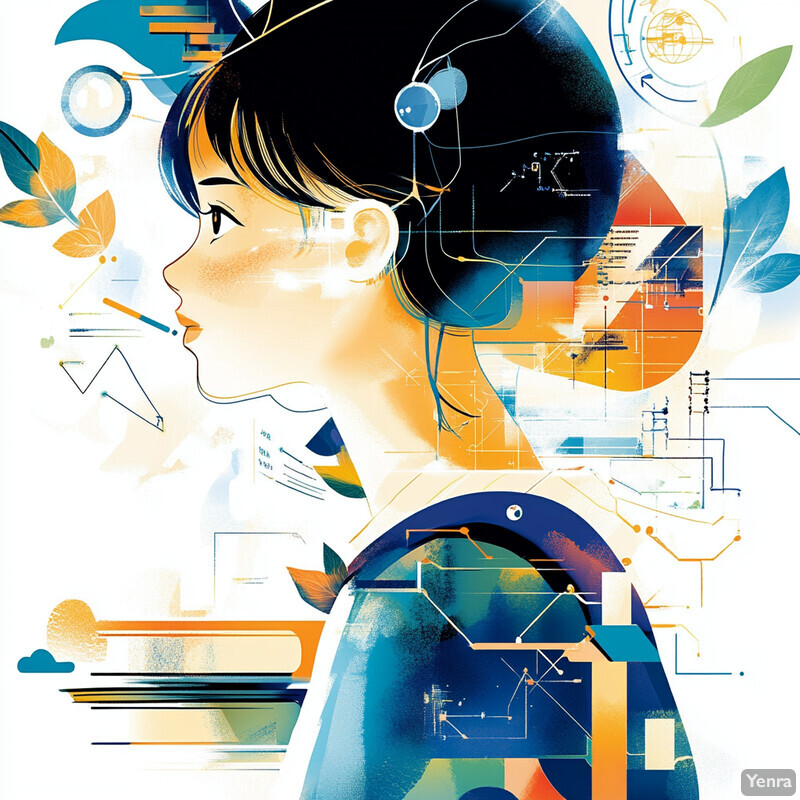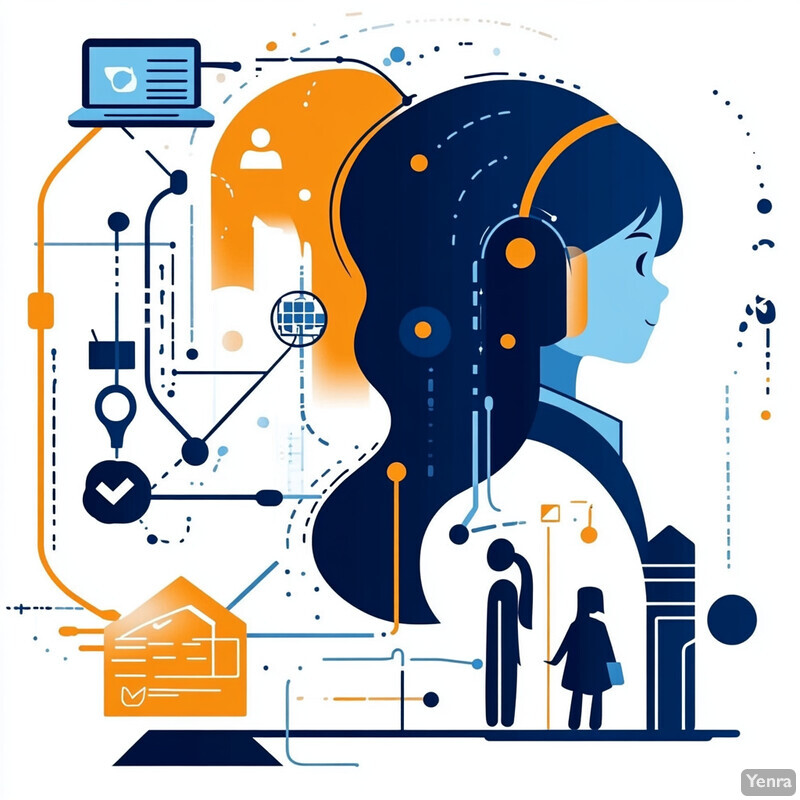1. Adaptive Skill Modeling
Advanced AI cognitive tutors continuously model each student’s knowledge and skill levels in fine detail. They infer which concepts a learner has mastered or is struggling with by analyzing ongoing performance. This lets the system dynamically adjust the difficulty and type of tasks in real time to match the student’s current understanding. By updating the learner model after every response, the tutor can deliver exercises that are neither too hard nor too easy. In practice, this means students get practice exactly where it is needed, which helps them build mastery efficiently. Overall, adaptive skill modeling allows education to be personalized at the level of each problem, improving learning efficiency and effectiveness.

Meta-analytic research has found that intelligent tutoring systems (which adapt to individual learners’ knowledge states) yield very large learning gains. One meta-analysis reported an effect size of 0.76 for ITS (almost matching the 0.79 of one-on-one human tutoring), indicating that such adaptive systems can nearly replicate the benefit of personalized human tutoring.
2. Personalized Learning Paths
AI-driven tutors create individualized learning journeys for each student. Based on assessment of the learner’s prior knowledge and performance, the system generates a customized sequence of lessons and practice activities. As the student progresses, the AI continually adjusts the plan: it may skip topics the student has mastered or provide extra practice on challenging areas. This ensures learners never experience a one-size-fits-all lesson; instead each path adapts to their unique strengths and gaps. Such personalization keeps students engaged by always meeting them “at their level” and pacing content to their needs. By tailoring instruction in this way, personalized learning paths help students advance efficiently toward their learning goals.

Research shows that adaptive personalized learning systems often yield better outcomes than traditional one-size-fits-all instruction. For example, a recent review of higher-education studies found that 59% of adaptive learning implementations reported improved academic performance and 36% reported increased student engagement. These findings suggest that letting AI tailor content to individual needs tends to enhance both achievement and motivation.
3. Real-time Feedback Generation
AI tutors use natural language and automated grading to give students immediate feedback as they work. The system instantly checks answers and common solution steps, then provides hints, corrections, or explanations on the spot. This is in contrast to waiting for teacher review or delayed scoring, which means misconceptions can be corrected right away. Real-time feedback keeps students on the right track and reinforces learning by addressing errors immediately. Over time, this rapid response also helps students learn problem-solving strategies, since they get guidance at the moment of need. Overall, instant feedback via AI accelerates learning and confidence by ensuring every mistake is an opportunity for quick, focused correction.

Studies consistently find that immediate feedback boosts learning. For instance, one experimental study showed that students given instant feedback on homework problems learned significantly more than those who received the same feedback later. In that study, participants who got immediate correctness feedback achieved higher learning gains than those whose feedback was delayed.
4. Emotion and Affect Recognition
Modern AI tutors can sense and respond to students’ emotional states. By using techniques like facial expression analysis, voice tone recognition, and sentiment analysis of student input, these systems infer emotions such as frustration, boredom, or confidence. When the tutor detects negative affect (e.g. confusion or anxiety), it might slow down, offer encouragement, or switch strategies to re-engage the student. Conversely, if a student seems bored or too confident, the system might accelerate or provide more challenging problems. By addressing the learner’s feelings and engagement level, affect-sensitive AI creates a more supportive and empathetic learning experience. This emotional awareness helps keep students motivated and reduces the risk of discouragement during difficult tasks.

Recent research indicates that AI models are capable of recognizing and responding to emotional cues effectively. In human evaluations, AI-generated tutor responses were often rated as more “empathetic” than responses from actual humans. This suggests that AI tutors can not only detect emotion but also craft supportive feedback that matches a student’s affective state.
5. Predictive Analytics for Performance
AI-driven analytics use historical and current student data to predict learning outcomes and highlight future trouble spots. By examining past performance, attendance, and engagement patterns, these systems can forecast which concepts a student is likely to struggle with or who might be at risk of falling behind. Teachers and tutors can then intervene early – for example, by scheduling extra review or customized support. Predictive models also alert educators to trends, like an entire class lagging on a particular topic, so that curricula can be adjusted. In practice, predictive analytics act like an early warning system, ensuring that no student’s difficulties go unnoticed and helping to keep everyone on track toward their goals.

In fact, data-driven early-warning systems are already common in U.S. schools: about 52% of public high schools reported using such systems by 2014–15. These systems track indicators (like attendance, behavior, and grades) over time to flag at-risk students, exemplifying how predictive analytics are used to anticipate and mitigate performance issues.
6. Continuous Formative Assessment
AI tutors embed assessment into every step of learning, providing ongoing checks rather than waiting for a final test. As students work through problems, the system continually evaluates their answers and solution steps. These instantaneous formative assessments allow the tutor to adjust instruction in the moment – for example, by offering hints when mistakes recur. Continuous assessment keeps teachers (and the system) informed about each student’s progress and misconceptions in real time. This approach ensures that learning gaps are identified and filled promptly, making the instructional process more adaptive and responsive. In effect, every interaction with the tutor doubles as a low-stakes assessment, guiding the next lesson for that student.

Education research has long highlighted the importance of ongoing feedback. Experts note that continuous formative feedback loops are “vital to improving teaching and learning”. In other words, frequent low-stakes assessment and feedback (a hallmark of AI tutors) is well-established as a key driver of better learning outcomes.
7. Intelligent Hint Policies
AI-powered tutors optimize when and how hints are given to maximize learning. These systems track each student’s progress and use smart algorithms (often reinforcement learning) to decide the best timing and complexity of hints. The first hint might be general and conceptual, helping the student rethink a problem, while subsequent hints become more detailed and specific if needed. By fine-tuning when help is provided, AI prevents giving away answers too early but also avoids letting a student stay stuck. Over time, intelligent hinting helps students develop problem-solving skills; they learn from gently guided attempts rather than relying on direct answers. In summary, thoughtful hint policies enable students to learn how to solve problems with gradually decreasing support.

Established cognitive tutoring research describes layered hint strategies: typically the system first provides a conceptual hint, and only if the student still struggles does it offer more specific guidance. For example, one cognitive tutor gives a broad hint initially and then increasingly detailed hints with each request, illustrating how AI can scaffold students’ own thinking before revealing solutions.
8. Domain-general Reasoning
Rather than teaching only isolated facts, modern AI tutors focus on general thinking skills that apply across subjects. They encourage students to understand underlying principles and strategies, such as critical thinking and problem-solving, which are useful in many contexts. By posing novel, open-ended questions and requiring explanation of reasoning, these tutors promote transfer of learning. For example, a math tutor might emphasize heuristic strategies that can also help in science or real life. In effect, AI systems push students to learn how to think, not just what to think, making students more adaptable learners. This domain-general focus builds skills that students carry with them to new and unfamiliar challenges.

Research confirms the value of teaching via real-world problems: a large meta-analysis found that project-based learning – which uses authentic, interdisciplinary projects – significantly improves students’ thinking skills as well as academic achievement. In other words, engaging in context-rich, cross-disciplinary problem-solving (a form of domain-general learning) yields meaningful gains in learning outcomes.
9. Automated Content Generation
AI tutors can automatically create and curate educational materials tailored to each student. For instance, they can generate practice problems, quizzes, or exercises on the fly based on the learner’s current progress. This reduces teachers’ workload by producing endless customized practice. It also means students encounter fresh problems that suit their skill level. Many systems also pull in relevant multimedia or real-time examples to reinforce concepts. In essence, generative AI acts like an always-on content assistant, ensuring learners have the right problems and explanations exactly when they need them.

Education technology platforms are already using AI to generate content. For example, Google Classroom added a feature (powered by Google’s Gemini AI) that can automatically create quiz questions from any text input. This exemplifies how AI tools are used to streamline generation of educational questions and exercises for teachers.
10. Adaptive Scaffolding
AI tutors provide “scaffolds” that adjust to the learner’s needs, offering more help when needed and fading it as the student gains skill. Early on, a student might get step-by-step guidance through a problem; as they improve, the AI gradually reduces prompts. This adaptive support aligns with each learner’s zone of proximal development. By incrementally lessening help, the student builds confidence and independence. Such scaffolding also keeps cognitive load in check – the tutor simplifies tasks initially, then hands over more control as the learner is ready. Overall, adaptive scaffolding helps students progress smoothly from guided practice to full mastery.

Empirical trials have found benefits to adaptive scaffolding. In one study of a game-based medical training module, learners who received tailored (adaptive) hints completed tasks faster and experienced lower cognitive load than those with static hints. This suggests that dynamically adjusting support can make students more efficient and less overwhelmed during learning.
11. Multi-modal Interaction
AI tutors support rich interaction modes, including text, speech, and even handwriting or gesture input. A student can talk or write math formulas, and the system understands and responds. This flexibility makes learning more natural: for example, voice-based Q&A lets students learn by speaking, and drawing detection can interpret written equations. Multimodal interfaces also improve accessibility, allowing learners to engage in the way that suits them best. Ultimately, by using speech recognition, optical character recognition, and other advances, AI tutors create a more engaging, intuitive learning environment that caters to diverse interaction styles.

Advances in AI have greatly improved accessibility features. For instance, automated speech recognition and captioning technology (pioneered by Google in 2009) has become accurate enough for real-time use. These tools now enable spoken questions and answers to be seamlessly integrated into learning systems, reflecting how multimodal AI (like voice interfaces) can be successfully incorporated into education.
12. Longitudinal Learner Tracking
Instead of viewing each lesson in isolation, AI tutors build long-term profiles of each student’s learning journey. They collect data across semesters or even years to see overall trends in performance and behavior. For example, a tutor might record that a student consistently struggles with algebra every year. This longitudinal perspective lets the system tailor instruction not just in one course but across curricula over time. Teachers can also see a student’s full history, helping them understand how early struggles in one subject might affect later learning in another. In this way, tutors provide a holistic timeline of each learner’s development, enabling more informed interventions and smoother learning trajectories.

Educational leaders recognize that unified analytics over time are crucial. For instance, EDUCAUSE’s 2023 horizon report highlights “unified data models for learning analytics” as transformative, enabling institutions to aggregate students’ data across courses and programs. This reflects a trend toward creating comprehensive longitudinal profiles to support student success.
13. Contextualized Learning Experiences
AI tutors make learning feel relevant by embedding it in real-world contexts. Rather than abstract drills, they use simulations, examples, or scenarios that students care about. For instance, a science tutor might include a virtual lab or a real environmental case study; a language tutor might frame a lesson around cultural stories or current events. This contextualization helps students connect new knowledge to their lives. It also often involves project-based or inquiry-based activities that bridge multiple subjects. By situating lessons in meaningful contexts, AI-supported learning increases engagement and helps students apply skills outside the classroom, deepening understanding.

Embedding learning in real-world projects yields strong results. A meta-analysis found that project-based learning – which uses practical, interdisciplinary projects – significantly improved both achievement and higher-order thinking skills. In other words, teaching students through authentic, context-driven problems led to higher learning outcomes.
14. Peer Learning Simulations
AI tutors can simulate collaborative learning and peer interactions. For example, an AI system might role-play as a classmate or debate partner, prompting the student to explain or defend answers. It can also create virtual group activities where students solve problems alongside “AI peers.” This brings social learning into the digital tutor, fostering communication and teamwork skills. By experiencing peer-like feedback, students practice explaining ideas and thinking aloud. Such AI-driven peer learning experiences can help students internalize concepts more deeply, just as they would by teaching or discussing with classmates.

Cooperative learning in human classrooms is proven to boost achievement. A comprehensive meta-analysis reported that structured peer-collaboration methods (like group problem-solving and peer tutoring) all produced significant positive effects on student academic performance. This indicates that the peer-to-peer interaction simulated by AI tutors can leverage the same benefits as face-to-face collaborative learning.
15. Metacognitive Support
AI tutors often include tools to help students reflect on and regulate their own learning. They might prompt learners to set goals, monitor their progress, or think about the strategies they used. For example, after a problem set the system might ask the student which steps they found hardest or suggest planning how to study more effectively. The tutor can also provide analytics dashboards showing study habits or areas of difficulty, encouraging self-evaluation. By highlighting effective learning strategies and reminding students to reflect, AI helps develop metacognitive skills like planning and self-assessment. These self-regulation supports empower students to become more independent and aware learners over time.

Research shows that training in self-regulation and metacognitive strategies has a substantial impact. In a meta-analysis of online/blended course interventions, self-regulated learning strategies had a moderate positive effect (effect size ≈ 0.65) on outcomes. This suggests that encouraging students to plan, monitor, and evaluate their learning (a key function of AI tutors’ metacognitive support) significantly improves academic achievement.
16. Adaptive Pacing and Sequencing
AI tutors control the pace at which material is presented, speeding up or slowing down based on the learner’s progress. If a student grasps a topic quickly, the system can move on sooner; if the student struggles, it takes more time and practice. Sequencing of lessons is also optimized: easier concepts come first and harder ones are introduced at the right moment. This adaptability keeps students in a zone where learning is neither too fast (causing confusion) nor too slow (causing boredom). In practice, this means the learning schedule is personalized – for example, advanced learners can progress faster, while others can review as needed. The result is more efficient learning with less wasted time.

Personalized adaptive pacing can lead to measurable gains. For instance, a large study of U.S. students found that those who used the self-paced Khan Academy platform for at least 18 hours in a school year made about 20% greater learning gains on a national math assessment than expected. This demonstrates that allowing students to advance at their own pace (with AI guidance) can significantly improve outcomes.
17. Interoperability with LLMs and Chatbots
Modern cognitive tutors often integrate large language models and chatbots to facilitate open-ended dialogue. Students can ask questions in natural language and receive detailed explanations or engage in tutoring conversations. This two-way interaction allows for deeper exploration of topics, as the AI can clarify misunderstandings or provide elaborations on demand. Chatbot integration also enables personalized Q&A on any topic, not limited to pre-scripted content. In effect, the tutor can engage in human-like tutoring dialogue, making learning more conversational and interactive. This enhances depth of understanding and lets students learn by asking and discussing as they would with a human tutor.

Surveys indicate that conversational AI is already being adopted in schools. Among U.S. teachers who use AI tools, 53% report using chatbots like ChatGPT at least weekly for classroom tasks. This shows that educators are actively leveraging chatbot-based tutoring features to supplement learning.
18. Data-driven Curriculum Refinement
Insights from AI tutors help educators improve their curriculum over time. By analyzing aggregated student data, teachers can see which lessons or problems many students find difficult and which are mastered easily. If a concept proves too hard across the board, the curriculum can be revised or additional materials added. In this way, the tutor’s analytics highlight gaps and misconceptions in the instructional design. Teachers can then iterate on lesson plans – for example, adjusting pacing, adding examples, or removing redundant content. Over cycles of implementation and analysis, the curriculum itself becomes more effective and tailored to learners’ needs.

Learning analytics tools are explicitly used to inform curriculum improvements. For example, educators can track cohorts of students over multiple courses and identify consistent weaknesses. In one guideline, administrators are advised to “review data across multiple courses and semesters” to find curriculum areas where students underperform, and then allocate additional resources to those topics. Such practices show how data-driven insights can refine teaching materials and strategies.
19. Cultural and Linguistic Sensitivity
AI tutors are being designed to adapt to students’ cultural and language backgrounds. This includes offering multilingual interfaces, automatic translation of content, and culturally relevant examples. For instance, a physics problem might reference local context or be explained in a student’s native language via AI. This ensures students from diverse backgrounds receive instruction in a way that is accessible and meaningful to them. By reducing language barriers and respecting cultural contexts, AI tutors promote equity. They can tailor analogies and examples to fit students’ experiences, helping all learners feel included and improving comprehension for non-native speakers.

The need for language support is well documented: up to 40% of students worldwide must learn in a language that is not their mother tongue. AI tools like real-time translation, multilingual chatbots, and text-to-speech help address this gap, enabling educators to reach diverse learners more effectively.
20. Holistic Learner Profiles
AI systems compile comprehensive profiles of learners that go beyond test scores. These profiles integrate data on cognitive skills, past performance, preferences, engagement patterns, and even socioeconomic or motivational factors. By viewing the “whole child,” tutors can align instruction not just with cognitive level but also with interests and needs. For example, knowing a student’s career interests or prior experiences allows the AI to recommend projects that are personally relevant. Such holistic profiling helps the tutor provide truly personalized support and guidance. Over time, these rich learner models enable education to adapt to each student’s unique life context and aspirations.

Institutions are actively building holistic learner records. For instance, Southern New Hampshire University participates in a consortium that is combining multiple data sources – from academic transcripts to employment credentials – into single learner profiles. This illustrates the move toward integrating varied learner information to support personalized education and career planning.